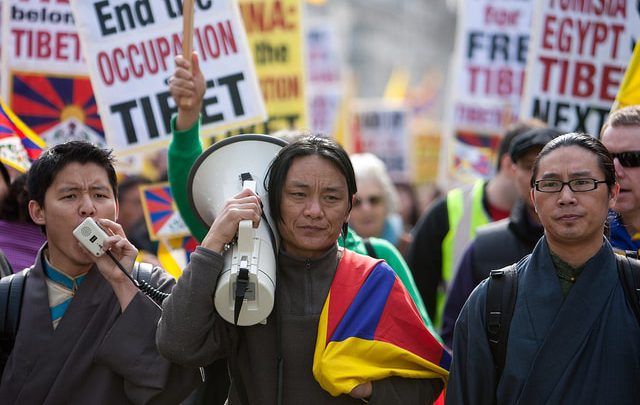Asia and OceaniaOngoing
Boundaries: Tibet and the People’s Republic of China
The People’s Republic of China, or PRC, asserts that Tibet is a part of China, while the Tibetan government, which is in exile, claims that Tibet is its own independent country and is being occupied by China illegally.

Is Tibet a Part of China?
This question is more difficult to answer than it seems. The People’s Republic of China, or PRC, asserts that Tibet is a part of China, while the Tibetan government, which is in exile, claims that Tibet is its own independent country and is being occupied by China illegally.
When Did the Controversy Begin?
Some would argue that the roots of the Tibet vs. PRC issue go as far back as the 13th century, when China, including the territory we call Tibet, was governed by the Mongolian Yuan Dynasty. Ancient maps have lent some support to the idea that the Chinese Yuan administration governed Tibet.
Opposing Views
On the other hand, if we move back a little further in history to the invasion of China by Genghis Khan’s Mongol Empire, we see a different story. Recognizing their conquest by Genghis Khan was inevitable, the rulers of Tibet negotiated a treaty. When Genghis Khan’s heir, Kublai Khan, established the Yuan Dynasty, he extended that same protection.
No one disputes that the Mongols conquered Tibet, as the ancient maps indicate. However, the Tibetans argue that it is ridiculous to claim that Tibet is a part of China simply because both countries were conquered by the Mongols. They argue that it would be just as illegitimate to claim that Ireland owns the northeast part of the United States because at one point both areas were under the control of the British.
Who Supports Who?
Many countries support the argument that Tibet is an integral part of the People’s Republic of China. The United States, France, United Kingdom, and the European Union accept the PRC’s claim that Tibet is part of their country. The United Kingdom recently clarified its position with relation to Tibet, saying, “ Like every other EU member state, and the United States, we regard Tibet as part of the People’s Republic of China.”
What Caused the Recent Controversy?
Up until about 1950, the Government of Tibet ruled Tibet even though it was considered a Chinese territory. In 1950, however, the Chinese invaded Tibet and ended its de facto independence. The Communist government of China began a program called the “Liberation of All Chinese Territories,” and Tibet was formally integrated into China.
What Went Wrong?
The People’s Republic of China made a 17-point agreement with the Tibetan spiritual leader, the Dalai Lama. This detailed agreement allowed Tibet to remain as an autonomous region under overall Chinese control. However, many argue that the 17-point agreement was invalid because the Tibetans were forced to sign it.
What Happened to the Tibetan Government?
The failure of this agreement led to the Tibetan government, called the Central Tibetan Administration, to be exiled. The leader, the Dalai Lama, lives in India, and although there have been many attempts to retake Tibet from the PRC, none has been successful. Many countries failed to intervene, believing that Tibet and China, with the help of India, would find a peaceful solution.
What’s At Stake?
Tibetan independence is an important issue not just for Tibet and the People’s Republic of China. If Tibet is not legally a territory of China, then the country of Tibet is being illegally occupied and inappropriately taken over. The issue also raises the important question of what qualities are necessary for a state to be considered a state and to have self-determination over its people and territory. Clearly, this is a pressing and complex issue that cannot be easily decided.




